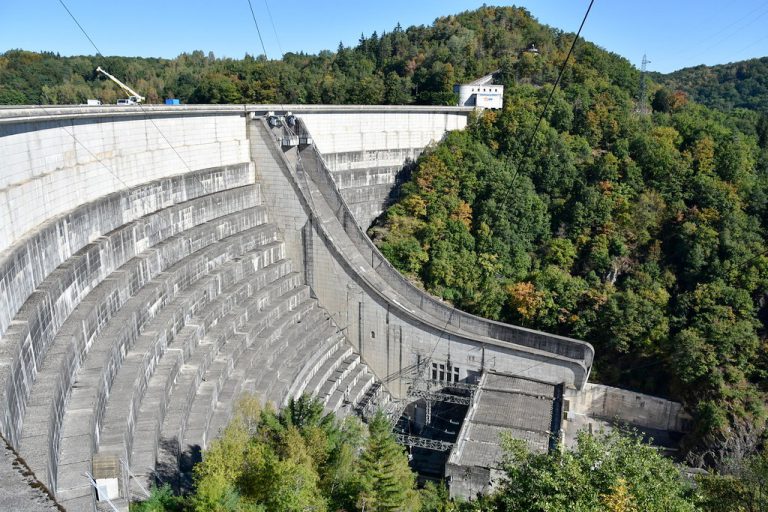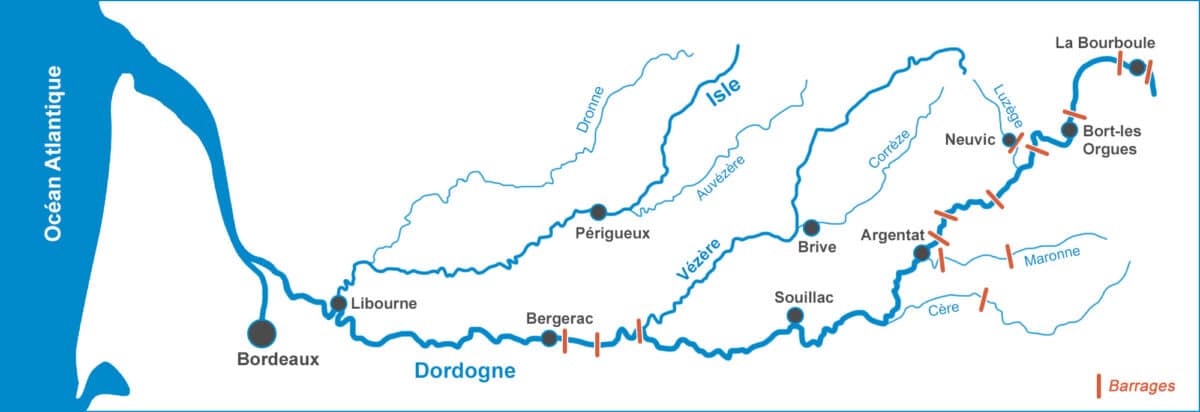History of inland navigation
The beginnings
The activity of inland navigation on the Dordogne dates back more than 2000 years, or more precisely to the conquest of Gaul by the Romans. The Romans created a city that we now call Bordeaux, but which at the time was called Burdigala.
 The first people to have sailed the Dordogne were the nautes, Roman boatmen, whose mission was to transport foodstuffs from the land, as well as stone, wood and especially merrains, the long planks of wood used to build barrels. It was the Romans who introduced the culture of wine to our regions, but we must not forget the great discovery they made when they arrived in Gaul: the famous barrel! Without it, good wine would not exist…
The first people to have sailed the Dordogne were the nautes, Roman boatmen, whose mission was to transport foodstuffs from the land, as well as stone, wood and especially merrains, the long planks of wood used to build barrels. It was the Romans who introduced the culture of wine to our regions, but we must not forget the great discovery they made when they arrived in Gaul: the famous barrel! Without it, good wine would not exist…
A thriving business
After the fall of the Roman Empire, river trade continued on the Dordogne to the point of becoming one of the main activities of the valley. But far from being limited to the transport of goods (wood, wine, cheese, walnut oil, walnuts, etc.), the barges were also an important means of conveying ideas: religious (such as the Reformation), political (the French Revolution, the Resistance during the Second World War) and also artistic.
The decline
 The arrival of the railway in the region marked the decline of the barge industry. Bergerac was linked to Bordeaux in 1872, Sarlat discovered the train in 1882… The train was seen as unfair competition for the barges, and rightly so: faster (in a few days, or even a few hours, the goods arrived at their destination) and above all safer (one in ten barges did not arrive at their destination). The barges and their families sabotaged many railway lines to slow down the development of the railways.
The arrival of the railway in the region marked the decline of the barge industry. Bergerac was linked to Bordeaux in 1872, Sarlat discovered the train in 1882… The train was seen as unfair competition for the barges, and rightly so: faster (in a few days, or even a few hours, the goods arrived at their destination) and above all safer (one in ten barges did not arrive at their destination). The barges and their families sabotaged many railway lines to slow down the development of the railways.
Entering the era of hydroelectricity

The very first dams built on the Dordogne were designed to power the railway lines. The Bort-Les-Orgues dam, built from 1942 to 1952, is the largest structure built on the Dordogne. It retains a volume of 477 hm3, the largest volume retained in France for a concrete dam. Nine other dams were built along the river: the Bourboule, Saint Sauves, Marèges, Aigle, Chastang, Sablier, also known as the Argentat, Mauzac, Tuilères and Bergerac dams.
La Roque-Gageac is situated between the dams of Sablier and Mauzac. The flow of the river for the promenade therefore depends on the seven dams located downstream of the village. In addition to the ten dams on the main river bed, there are about fifty dams on the tributaries of the Dordogne. Because of these numerous dams, the Dordogne was for a long time the leading river in terms of electricity production.


